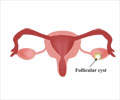
‘About 11 percent of females who survive childhood cancer have an ovarian condition that leaves them at risk for infertility, weaker bones and frail health as young adults.’
Tweet it Now
Researchers also determined that high-dose chemotherapy with alkylating agents further increased the risk for premature ovarian insufficiency in St. Jude LIFE participants treated with radiation. "The past decade has seen tremendous progress in female fertility preservation, which makes these results timely," said first and corresponding author Wassim Chemaitilly, M.D., an associate member of the St. Jude Department of Pediatric Medicine - Division of Endocrinology.
"Survivors, both men and women, tell us that the ability to have children is important to them. Better defining the risk factors and prevalence of premature ovarian insufficiency in female survivors will help better identify patients who are most likely to benefit from fertility preservation."
Along with fertility problems, researchers found that like other women with premature ovarian insufficiency, the condition put childhood cancer survivors at risk for poor overall health.
Low Bone Mineral Density
Advertisement
Low bone mineral density is a risk factor for fractures and the bone-thinning disease osteoporosis. Frailty signals decreased strength and physical fitness, which may leave individuals at risk for early death.
Advertisement
The average survivor in this study was about 32 years old and 24 years removed from their original cancer diagnoses. But just 31 of the 100 survivors diagnosed with premature ovarian insufficiency were receiving hormone replacement therapy at the time of their St. Jude LIFE assessment.
"The study reveals possible obstacles survivors face to receiving hormone replacement therapy. These obstacles merit further study," Chemaitilly said.
"Some survivors may not have access to appropriate care. For other survivors and their physicians, the issue may be balancing the benefits of hormone placement therapy with the potential risks, including the risk of second cancers in some survivors."
The study also highlighted the importance of patient-specific factors such as body mass index in understanding and predicting premature ovarian insufficiency.
Survivors with a body mass index of 30 kg/m2 were about 40 percent less likely to have been diagnosed with premature ovarian insufficiency than leaner survivors.
"Obesity during cancer treatment is known as a strong predictor for obesity later in life," Chemaitilly said. "For now, we can only speculate that being overweight or underweight during treatment may, for whatever reason, influence or predict ovarian vulnerability to either radiation or chemotherapy.
"Precision medicine, including identification of possible genetic factors that influence risk, holds the most promise for identifying young cancer patients or survivors who are most likely to benefit from fertility preservation measures."
Source-Eurekalert















